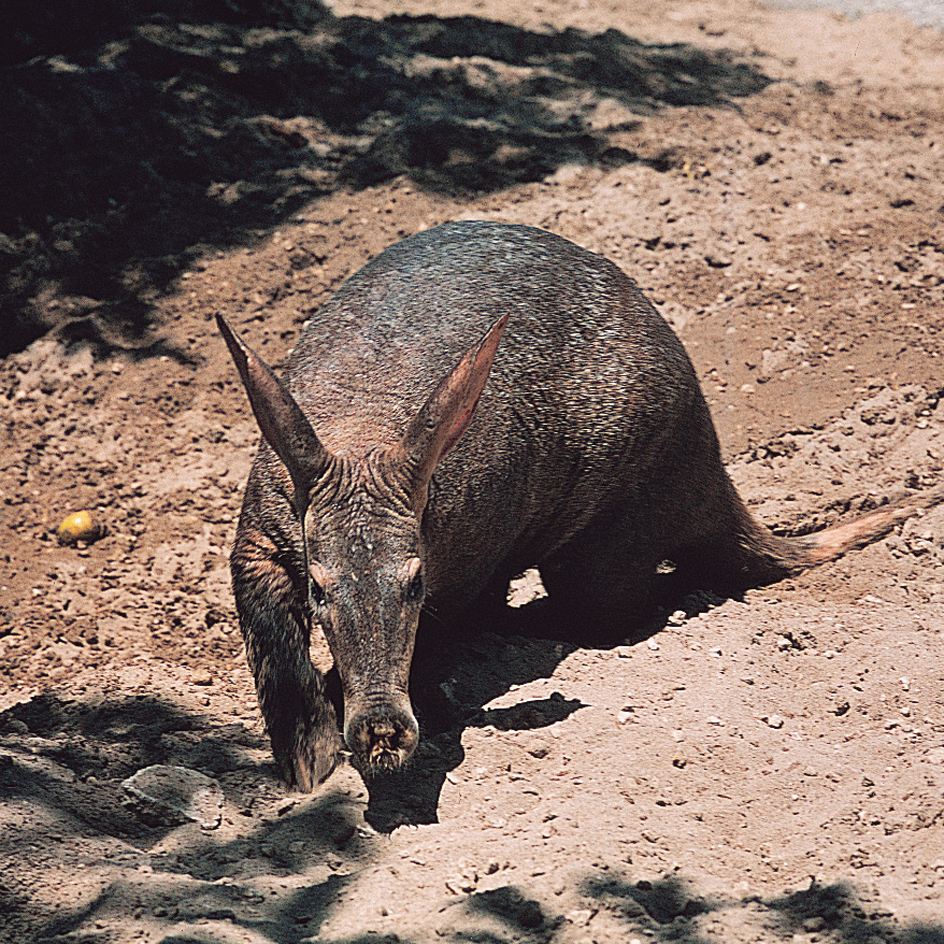Aardvark, << AHRD vahrk, >> is an African mammal that eats ants and termites. It has an arched body with a tubelike snout, large ears, and a long tail. The animal hunts for food at night and sleeps in a burrow during the day. In the 1600’s, Dutch settlers in southern Africa gave the aardvark its name, which means earth pig.

Aardvarks measure 4 1/2 to 6 1/2 feet (1.4 to 2 meters) long and weigh 110 to 155 pounds (50 to 70 kilograms). Their coarse hair ranges in color from pinkish to grayish. The animals lack front teeth. But the peglike molars on the sides of their mouths grow throughout their lives. Unlike the teeth of many mammals, aardvarks’ molars do not have an enamel coating. Instead, a hard tissue called cementum covers the teeth. Aardvarks have four sharp, spoon-shaped claws on their front feet and five on their hind feet. When attacked, they roll on their backs and use their claws for defense. People, large cats, hyenas, and wild dogs hunt aardvarks.
An aardvark digs burrows faster than most other animals. It can make a deep hole in only a few minutes. Permanent burrows may extend to 43 feet (13 meters) in length. Although the aardvark does not have good eyesight, it uses its excellent senses of smell and hearing to find prey. When an aardvark searches for food, its snout stays close to the ground and its ears point forward. The animal uses its claws to rip open ant or termite nests, and it licks up the insects with its long, sticky tongue. The tongue measures about 12 inches (30 centimeters) long.
Female aardvarks give birth to one baby at the start of the rainy season. Young aardvarks start digging burrows at about 6 months of age. After about a year, young male offspring move away from their mothers. Young females also become independent, but they remain near their mothers.
